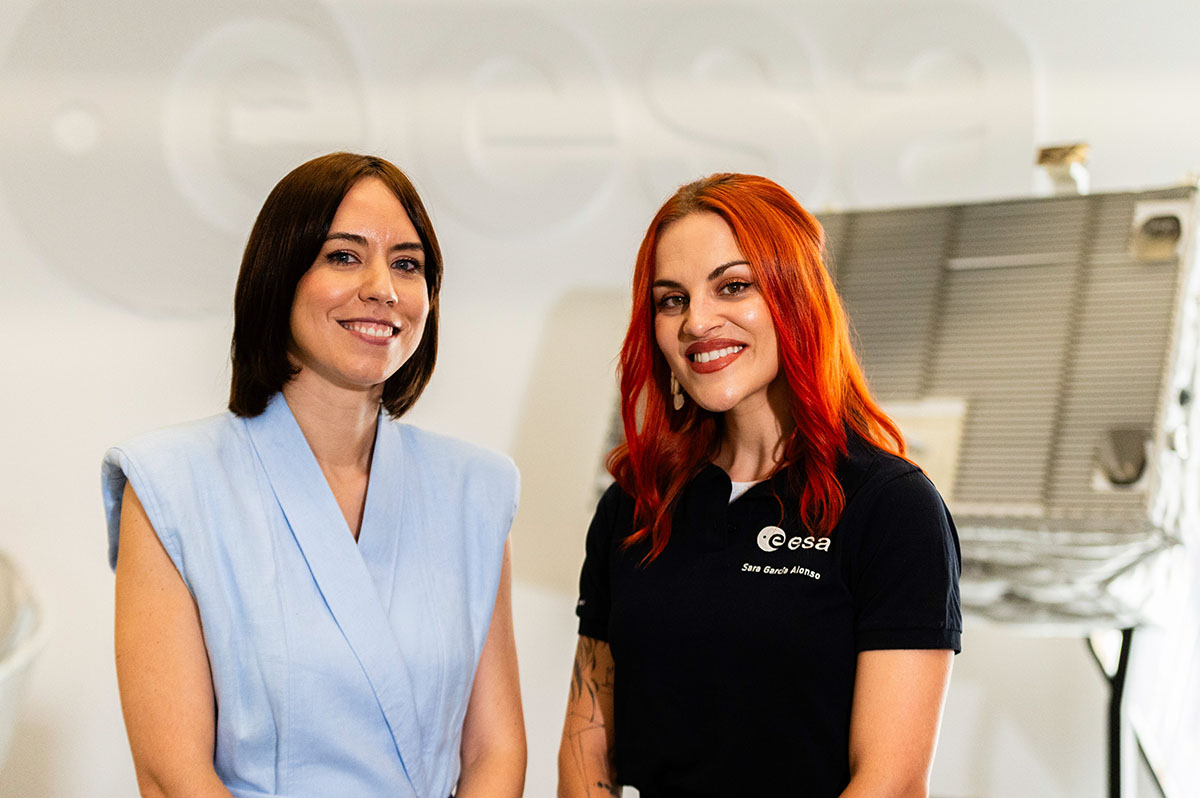Morant announces that Sara García will be the first Spanish astronaut to undergo initial training at the European Space Agency
News - 2024.9.26
 The Minister for Science, Innovation and Universities, Diana Morant, together with astronaut Sara García
The Minister for Science, Innovation and Universities, Diana Morant, together with astronaut Sara García
The Minister for Science, Innovation and Universities, Diana Morant, has announced that Sara García, a molecular biologist and researcher at the Spanish National Cancer Research Centre (CNIO), will participate in initial training as a reserve astronaut at the European Space Agency's (ESA) European Astronaut Centre in Cologne, Germany.
Sara García will be part of this groundbreaking training, after Spain, through the Spanish Space Agency and as a Member State of the European Space Agency (ESA), has requested this unprecedented instruction so that Sara García could undergo initial training as an astronaut.
Minister Morant explained that "this is great news because, with this decision, Sara García will become the first woman in our country to receive astronaut training so that she can fly in the future".
"The Government of Spain is committed to generating opportunities for our scientific and innovative talent in our country. No doubt a great inspiration for many children, especially for them and their future careers and professions. Because we have to write the future together," she said.
For her part, Sara García said that it is "a magical moment and another step towards the dream of having a space mission in the future that can contribute to advancing knowledge and developing science in space".
A total of ten reserve astronauts from ESA member states will take part in this initial training. The first five members - including Sara Garcia - will start their training on 28 October. Her partners in this course will be Andrea Patassa (Italy), Arnaud Prost (France), Amelie Schoenenwald (Germany) and Aleš Svoboda (Czechia). The second round, involving five additional reserve members, will start in January 2025.
This activity will promote the visibility of the participating astronauts, including Sara García, and our country's space activities. It will also promote the presence and visibility of women in the fields of science, technology and innovation.
With this training, Sara García will be able to continue her training so that, in the coming years, she can follow in the footsteps of Pablo Álvarez, the first Spanish astronaut of the 21st century to travel into space, who is already at Space Center Houston, owned by NASA, where he continues his training.
Training details
The training will equip the astronaut reserves with the necessary skills for future space exploration missions and acquire knowledge of Europe's scientific research.
This training programme will consist of several modules taken from the basic training course that astronauts follow in their first year, the course from which Pablo Álvarez graduated in April.
For two months, Sara Garcia and her colleagues will be able to acquire the basic skills to support future space exploration activities. The courses that will be held will serve as an introduction to many areas of full training and will have both theoretical and practical components.
Courses will include subjects such as space technology and operations, space vehicle systems, water and winter survival techniques (where they are prepared for emergency landings in inhospitable places). They will also practice extra-vehicular activities, simulating weightlessness conditions in a giant pool with life-size models of modules from the International Space Station (ISS). These activities are those performed by astronauts to install or repair equipment outside the ISS and require highly specialised training.
The Ministry of Science, Innovation and Universities, directly and through the Spanish Space Agency, is supporting exploration activities with great interest, both in manned flights to the ISS and in robotic exploration with instruments on Mars.
"A relevant milestone in Spanish space activities".
Diana Morant stated that "today's event is an important milestone in Spanish space activities because, in addition to providing inspiration to society as a whole, it promotes the presence and visibility of women in technical fields and encourages vocations in STEM".
The ESA astronaut pool consists of 12 astronauts, who were selected in the ESA astronaut selection process. In this process, five candidates - who became astronauts at the end of the course in April this year, including Pablo Álvarez - and 12 members of the reserve - including Sara García - were chosen.
While astronauts who have already graduated are certain to fly on future ESA missions from 2026 onwards, reserve members remain ready to join ad hoc missions when the opportunity arises.
Non official translation




